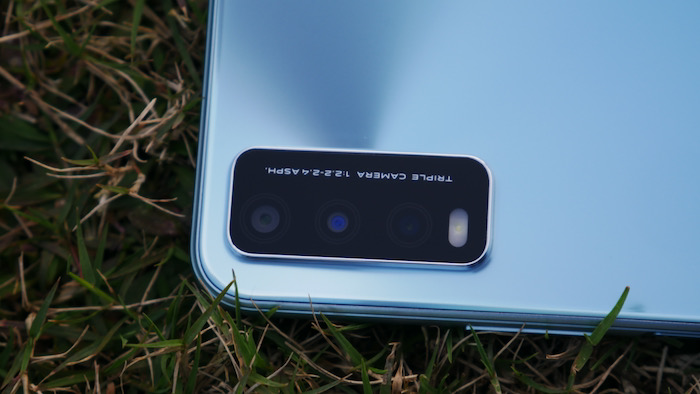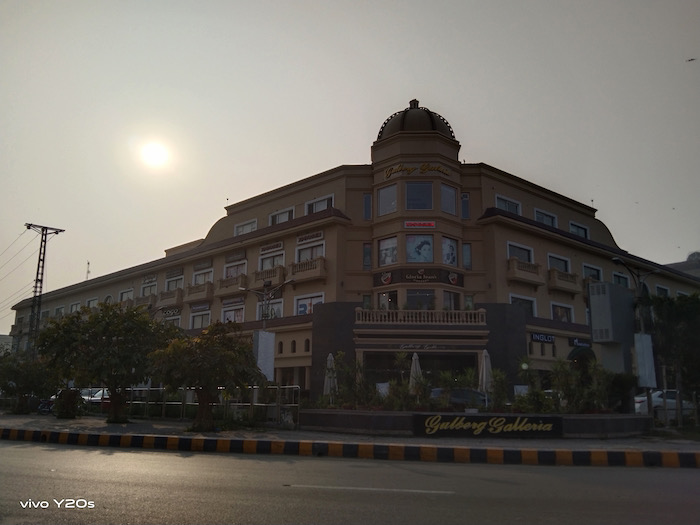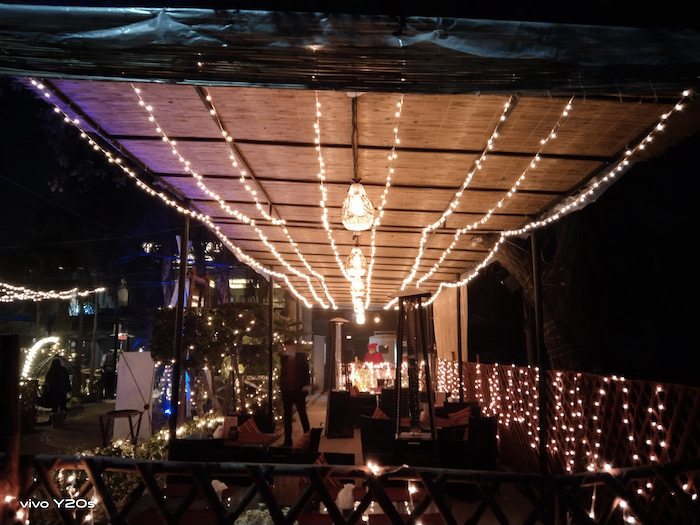Vivo Y20s falls right in the middle of a happening segment that is busy with so many choices from the rivals – all giving each other neck-to-neck competition. 2021 could turn out to be more aggressive than ever as the shrinking incomes due to COVID-19 are compelling buyers to spend wisely and go for budget-friendly options.
Y20s is one such piece of technology that delivers most of the things a mid-range phone gave us in 2019-2020. Side-mounted fingerprint sensor, glassy feel on the back cover though it’s plastic with a matte finish, a more colorful display despite being a 720 screen resolution, and a few more.
Let’s summarize what we are getting on Y20s and see if this device is a real value for money or just a half-hearted attempt from the Vivo.
Vivo Y20s Specifications
- Display: 6.5 inch, IPS LCD, 720×1600 resolution (270ppi)
- OS: Android 10, Funtouch 10.5
- Chipset: Qualcomm Snapdragon 460 (11nm), Adreno 610 GPU
- RAM/ROM: 4GB/128GB (extendable)
- Camera (rear): 13MP + 2MP + 2MP
- Camera (front): 8MP
- Battery: 5000 mAh (18W charger)
Minimal design is pleasing


Over the years, Vivo has polished its design skills better than some of the old folks. Ever since Vivo its S series, S1 Pro, to be exact, every successive device seems to be doing better in design than previous models. Vivo Y20s is comfortable to fit in the hands for longer durations. The tapered edge of the rear cover smoothly merges with the plastic frame. It feels slimmer and at 192 gm of weight coupled with the plastic body, it feels lighter to hold.
Unlike some Infinix and Tecno phones, the rear side doesn’t show off any pattern, it’s a matte finished ‘easy on eyes’ surface that slightly changes shades depending upon the angle of light falling on the surface. I have Purist Blue color as my review unit, but there is an Obsidian Black available too in the market.
The triple camera setup doesn’t massively protrude and hence gives a lesser wobbling on the flat surface. However, it’s locked nicely in the upper left corner.
Budget phones usually show prominent bezels, and similar is the case with Vivo Y20s, and we are not much bothered about the edges as apart from these black strips, the screen size still looks adequate. If you are a fan of minimal edges, check out our list of top smartphones with the highest screen to body ratio, there is a budget phone category as well.
For a 720+ display resolution, the display is colorful and contrasty. The brightness level of Y20s is quite reasonable indoors at almost 40%. The use of in-cell technology also improves the overall display quality including the touch sensitivity.
The waterdrop notch intrudes the display, but it’s there, bear it or leave it; it’s a usual trait now. If you are not comfortable with the intruder, you can shrink the screen size by getting rid of the notch area. Vivo Y20s does it one by one for each app from the display setting area. (Settings>>Display and brightness>>Display at the top of the screen).
The display setting area is very basic. Apart from Eye protection and Dark mode, you also get to see the “color temperature adjustment” for some basic tweaking.
Performance isn’t disappointing
The Qualcomm Snapdragon 460 under the hood, in association with Adreno 610 and 4GB RAM, is quite capable of handling day-to-day tasks. For storage, the device is offering 128GB internal storage extendable further by 256GB through a microSD card.
While talking about the benchmark performance, the device scored 156,126 on Antutu, almost similar to Huawei Y8P’s (Kirin 710f) score of 155,291, and Huawei Y9a (Helio G80) also does not seem far away with a 161,265 score. Additionally, the device reached 256 on Geekbench’s single-core, whereas on multi-core, it showed 1154.
The budget phone also reflects a similar performance in the real-life test that did not disappoint us at any point. The hardware-software combination handled the multitasking without a significant hiccup other than a slight lag in switching apps after an hour of gaming. We played PUBG comfortably on ‘balanced’ graphics courtesy of ‘Ultra Game Mode’ featuring some handy tools.
An hour of PUBG drained some 18% of the battery, making it 5 to 6 hours of backup for resource-intensive online games.
Let me tell you; we used 4G mobile data instead of Wi-Fi that normally consumes one to two percent more battery power.
The 5000 mAh battery took almost 2 hours and 4 minutes to charge fully with the help of the 18W charger Vivo is supplying inside the box. Unfortunately, we are not getting USB Type C here, instead, a micro-USB port.
Checkout best mobile phones with the longest battery life
If you want to know how the device responded to our different tests, you can watch our detailed Vivo Y20s battery test video here.
The rear fingerprint scanner looks boring now. The one on Vivo Y20s makes it more stylish on the right side but it’s not the best in speed we have experienced. We came across a few failed attempts while trying to unlock it quickly, perhaps a software update might fix the glitch but we must not forget it’s still a budget phone.
Sound quality through its single firing speaker is decent enough with no shrilling effect, but we are not pleased with the loudness that seems moderate enough. It looks fine for a small room, but in a crowded place, it might become hard to hear calls and multimedia. The sound setting area offers three prebuilt sound customization options for earphones. There is no equalizer or bass boost option available, though. In contrast, the sound experience with earphones is immensely satisfying.
Camera: Just a 13MP lens?
Vivo calls it an AI triple macro camera. Honestly speaking, it’s a very basic camera setup with the 13MP camera being the primary sensor; the other two lenses on the rear side are 2MP bokeh and 2MP macro. The setup is nothing huge to brag about, but the camera does the job quite well for close-up objects.
We noticed the standard mode performing nicely in the daylight and also at night for well-lit subjects. We could grab a fair amount of detail with HDR mode on. The absence of night mode is desperately felt at night, but the HDR mode does try to compensate with good white balance and color reproduction; however, it struggles to control the noise. If you are extra cautious and want to be more creative, the pro-mode is quite a helpful option on this device.
The phone only provides digital zoom up to 4x. The images are acceptable at 2x on smaller screens; beyond that, you get a pixelated image.
The camera manages to maintain color saturation across all modes. The bokeh is better with noise handling, and it can create some cool shots. We are happy to see a good edge detection algorithm in portraits, which we assume is much better in quality than some other Vivo models.
The 2MP macro sensor needs a very stable grip to shoot tiny objects from just 4cm away. Most of the time, you need some physical support or a small tripod for steady shots; otherwise, as it is with other phones too, 8 out of 10 photos will turn out blurry. We are impressed with the details, colors, and exposure handling in macro shots, but noise is once again a major culprit here.
The moderate 8MP lens on the front is equally good with selfies in the daylight. It can capture good facial details and balanced skin tones for still and video shots. The device can shoot 1080p videos from both rear and front cameras. Like the still images, we noticed balanced colors and decent quality in the videos, but it struggled in handling white light sources appropriately.
Verdict
With the launch price of PKR 29,999 ($187) in Pakistan, the device competes directly with the likes of Samsung Galaxy A12, Xiaomi’s Poco M3, Infinix Note 8, and Nokia 5.3. Right away, the 48MP camera on the rivals makes it an underdog. However, unbelievably, Vivo Y20s stands as a well-balanced performer with its limited specs.
Still, we can’t be compelled with it in the presence of heavy camera phones, but if Vivo considers cutting down the price, the device has the strength to come out as a strong competitor.

























Fantastic❤❤